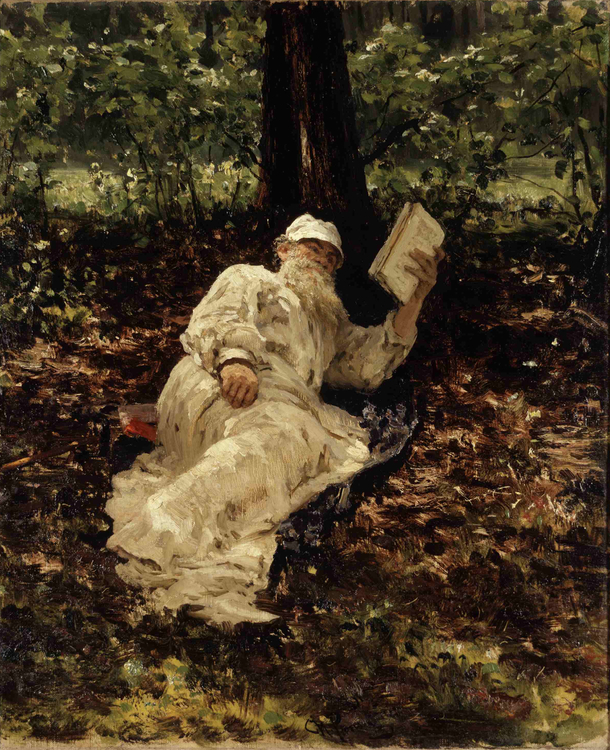
??? ??? ?????? ????? ????? ??????, ??? ?????????, ???? ????????? ??? ????. ??????, ??? ???? ?? ?? ???? ?????? ???????, ?? ????? ?? ????????? ? ??, ?????????? ?????????, ???? ?? ???????. ?????? ??, ??????, ??? ????? 9/10 ????? ????????? ???? ???????, ?? ??? ??????? ????????? ????? ????, ??????? ?? ?????????? ??????????? ??????????? ?????? ? ?????????????? ???????????? ? ????????? ?????????? ?? ????????? ? ??? ??????????? ????????? ?????????, ? ??????? ? ??????? ???????? ?????????, ? ? ??? ???????, ??????? ?????? ?????????? ???? ?????????.
? ???? ??????? ?????? ??? ???????? ? ? ????????? ????? ???????? ??, ??? ? ???? ???????, ?? ? ?? ?????????? ? ????? ???? ??????? qu’ils en savent plus long que moi.
And this is why such a charming egghead as Grigoriev is of so little interest to me. It’s true, if there had been no criticism at all, then Grigoriev and you, persons who understand literature, would be superfluous. Today, however, when 9/10 of all that is published is criticism, for art criticism, we need people who would show the senselessness of looking for ideas in a work of art, but who instead would continually guide readers in that endless labyrinth of linkages that makes up the stuff of art, and bring them to the laws that serve as foundation for those linkages.
And if critics can now understand, and even express in newspaper scrawl what I am trying to say, then I congratulate them and can bravely assure them that they know more about it than I do.
—Count Lev Nikolaievich Tolstoy, letter to Nikolai Strakhov, April 23, 1876.
Leo Tolstoy had some rather eccentric thoughts about art and its role in society. He rejected the art-for-art’s-sake view arising from antiquity, insisting instead upon a moral foundation for art—in his case, a morality based on an understanding of early Christianity. He was notoriously distant from the thinking of the Orthodox Church of his day, being persuaded that it had strayed far from the original thinking of Christ and his early followers.
Art, for Tolstoy, was about conveying feelings across time and cultures; good art involved the transmission of feelings that were compelling and associated with proper moral values. Of course, the reader of the Kreutzer Sonata or Anna Karenina knows that these morals are not necessarily consonant with the mores of society, for fidelity to one’s emotions plays a significant role in Tolstoy’s artistry, too.
Tolstoy was also a pronounced anti-snob. Too much refinement, too conscious an effort to play to the sentiments and understandings of a small cultural elite, ruined art. In his view, a Beethoven sonata might well be serious art, but the heroic Choral Symphony could never be, because too few listeners could appreciate it. Universality is therefore an essential aspect of Tolstoy’s vision of art. True art must strive to free itself from the conventions of any given age and place; it must needs be true in different societies and cultures. This very universality helps to clarify that something is not trivial or transitory, but enduring and thus something that merits the name art. This thought emerges briefly in a letter Tolstoy wrote to his friend Nikolai Strakhov in 1876, in the midst of a lampooning delivered to contemporary Russian art critics. One of the things that marks great art is a sense of linkage, or engagement with the past. This very engagement is evidence of universality.
My friend Harold Bloom takes this passage as a motto for his recent book of literary criticism, The Anatomy of Influence—very appropriately, for it is a work of genuine art criticism in the Tolstoyan tradition. Though fortunately for us, Bloom is far more generous in his understanding of what great art may be.
Listen to the first movement (Präludium) of Max Reger’s Cello Suite No. 3 in A Minor, opus 131c (1915) performed by Guido Schiefen:



